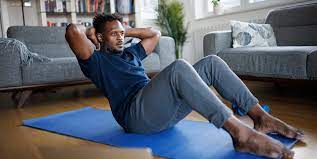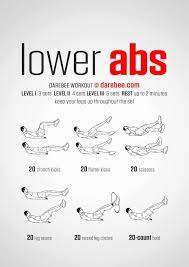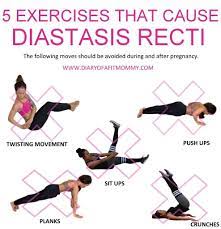Core Strengthening Exercises: Building a Solid Foundation for Fitness
A strong core is the foundation of a healthy and fit body. It not only enhances your physical performance but also improves your posture, balance, and overall well-being. Core strengthening exercises target the muscles in your abdomen, back, and pelvis, providing stability and support to your spine and surrounding structures. Whether you’re an athlete looking to improve performance or someone seeking better posture and injury prevention, incorporating core exercises into your fitness routine is essential.
Plank:
The plank is a classic core exercise that engages multiple muscle groups simultaneously. Start by lying face down on the floor, propping yourself up on your forearms and toes. Keep your body straight like a plank, engaging your abdominal muscles while maintaining proper alignment from head to toe. Hold this position for 30 seconds to a minute, gradually increasing the duration as you build strength.
Russian Twists:
This exercise targets the obliques – the muscles on the sides of your abdomen. Sit on the floor with your knees bent and feet flat on the ground. Lean back slightly while keeping your back straight. Lift your feet off the ground and interlace your fingers or hold a weight in front of you for added resistance. Twist your torso from side to side, touching the ground with each hand as you rotate.
Bicycle Crunches:
Bicycle crunches are highly effective for targeting both upper and lower abs simultaneously. Lie flat on your back with your hands behind your head, elbows out to the sides. Lift both legs off the ground and bend one knee towards your chest while simultaneously rotating your torso to bring the opposite elbow towards that knee. Repeat this motion alternating sides in a cycling motion.
Bird Dog:
The bird dog exercise strengthens both core muscles and stabilizes the spine by engaging deep abdominal muscles along with back extensors. Start on all fours with hands directly under shoulders and knees under hips. With a flat back, extend your right arm forward while simultaneously extending your left leg back. Hold for a few seconds, then switch sides.
Pilates Roll-Up:
Pilates is known for its focus on core strength, and the roll-up exercise is a staple in their repertoire. Lie on your back with arms extended overhead and legs straight. Slowly roll up, reaching towards your toes while keeping your core engaged and spine rounded. Reverse the movement to return to the starting position.
Remember to breathe steadily throughout each exercise and maintain proper form to maximize the benefits and reduce the risk of injury. Start with a few repetitions of each exercise and gradually increase as you build strength and endurance. Consistency is key when it comes to strengthening your core – aim for at least two to three sessions per week.
Incorporating core strengthening exercises into your fitness routine will not only improve your physical performance but also enhance your overall quality of life. So, whether you’re an athlete looking to boost athletic performance or someone seeking better posture and injury prevention, start building a solid foundation by prioritizing core strength today!
Frequently Asked Questions: Core Strengthening Exercises at Home, Weak Core Signs, Best Exercises, and Fastest Ways to Strengthen Your Core
- How can I train my core at home?
- What are the signs of a weak core?
- What is the best core strengthening exercise?
- What is the 5 fastest way to strengthen your core?
How can I train my core at home?
Training your core at home is convenient and can be just as effective as working out in a gym. Here are some simple yet effective ways to train your core at home:
- Plank variations: Planks are excellent for core strength. Start with a standard plank by assuming a push-up position, but with your forearms on the ground. Hold this position for as long as you can while maintaining proper form. You can also try side planks, plank jacks, or elevated planks to challenge different muscles in your core.
- Crunches: Lie on your back with knees bent and feet flat on the floor. Place your hands behind your head or across your chest. Lift your upper body off the ground, engaging your abdominal muscles, and then slowly lower back down. Avoid pulling on your neck and focus on using your abs to perform the movement.
- Mountain climbers: Assume a high plank position with hands directly under shoulders. Drive one knee towards your chest while keeping the other leg extended, then quickly switch legs in a running motion. This exercise not only targets the core but also gets your heart rate up for added cardio benefits.
- Russian twists: Sit on the floor with knees bent and feet lifted off the ground, leaning back slightly to engage the core muscles. Hold a weight or medicine ball in front of you (or use just bodyweight). Rotate from side to side, touching the weight to the ground on each side.
- Leg raises: Lie flat on your back with arms by your sides or under your glutes for support. Keeping legs straight and together, lift them towards the ceiling until they form a 90-degree angle with the floor. Slowly lower them back down without touching the floor and repeat.
- Bicycle crunches: Lie flat on your back with hands behind your head and elbows out to the sides. Lift both legs off the ground and bring one knee towards your chest while simultaneously rotating your torso to bring the opposite elbow towards that knee. Alternate sides in a cycling motion.
- Yoga and Pilates: Many yoga and Pilates exercises focus on core strength and stability. Incorporate poses like Boat Pose, Plank Pose, Side Plank, and Bridge Pose into your routine to engage your core muscles.
Remember to start with proper form and gradually increase the intensity or duration as you gain strength. It’s also essential to listen to your body and take rest days as needed. With consistency and dedication, you can effectively train your core at home and enjoy the benefits of a strong and stable core.
What are the signs of a weak core?
A weak core can manifest itself in various ways. Here are some signs that may indicate a weak core:
- Poor Posture: Slouching or having a rounded back while sitting or standing is often a sign of weak core muscles. A strong core helps maintain proper alignment and supports the spine, promoting good posture.
- Back Pain: Weak core muscles can lead to increased stress on the spine, resulting in lower back pain. When the core is weak, other muscles may compensate, causing imbalances and discomfort.
- Lack of Balance: Core muscles play a crucial role in maintaining balance and stability. If you find it challenging to stay balanced while performing activities such as standing on one leg or walking on uneven surfaces, it could be an indication of a weak core.
- Difficulty with Functional Movements: Daily activities that require core strength, such as bending, lifting, twisting, and reaching, may become more challenging if your core is weak. Weakness in this area can affect your ability to perform these movements efficiently.
- Limited Athletic Performance: A strong core is essential for optimal athletic performance across various sports and physical activities. If you notice limitations in your performance or struggle with movements that require power transfer from your lower body to upper body (or vice versa), it could be due to a weak core.
- Poor Breathing Control: The diaphragm is an important muscle involved in breathing control and is part of the core musculature. Weakness in the core can impact proper diaphragmatic breathing, leading to shallow breathing patterns.
- Digestive Issues: Core weakness can also affect abdominal muscles involved in digestion and elimination processes. Weakness in these muscles may contribute to issues such as bloating and constipation.
If you experience one or more of these signs, it may be beneficial to incorporate exercises that target your core into your fitness routine or consult with a healthcare professional or fitness expert for guidance. Strengthening your core can improve your overall stability, posture, and functional movements, leading to better physical well-being.
What is the best core strengthening exercise?
The best core strengthening exercise can vary depending on individual preferences, fitness level, and specific goals. However, one highly effective and widely recognized core exercise is the plank.
The plank is a versatile exercise that engages multiple muscle groups in your core, including the rectus abdominis (six-pack muscles), transverse abdominis (deep stabilizing muscles), obliques (side muscles), and lower back muscles. It also activates the muscles in your shoulders, arms, and legs to provide stability throughout your body.
To perform a plank, start by placing your forearms on the ground and aligning your elbows directly under your shoulders. Extend your legs straight behind you, balancing on your toes. Keep your body in a straight line from head to heels, engaging your core muscles to maintain stability. Hold this position for as long as you can while maintaining proper form.
The plank can be modified to suit different fitness levels by adjusting the duration or adding variations such as side planks or elevated planks. It is an excellent exercise for building overall core strength, improving posture, enhancing stability, and preventing lower back pain.
Remember that consistency is key when it comes to any exercise routine. Aim to incorporate a variety of core exercises into your workouts to target different muscle groups and achieve well-rounded strength in your core area. Consulting with a fitness professional or trainer can also help tailor an exercise program specifically to meet your needs and goals.
What is the 5 fastest way to strengthen your core?
- Plank Variations: Planks are highly effective for strengthening the core. To challenge your muscles even further, try different variations such as side planks, plank jacks, or plank with leg lifts. These variations engage different muscle groups within the core and provide a more comprehensive workout.
- Dead Bug Exercise: Lie on your back with your arms extended towards the ceiling and knees bent at a 90-degree angle. Lower one arm behind your head while simultaneously straightening the opposite leg towards the ground. Return to the starting position and repeat on the other side. This exercise targets both your abs and lower back muscles.
- Mountain Climbers: Begin in a high plank position with your hands directly under your shoulders and body in a straight line. Quickly alternate bringing one knee towards your chest while keeping the other leg extended back, as if you’re climbing a mountain. This dynamic exercise not only works your core but also elevates your heart rate for added cardiovascular benefits.
- Russian Twists with Medicine Ball: Sit on the floor with knees bent and feet lifted slightly off the ground. Hold a medicine ball or weight in front of you, then twist from side to side, touching the ball to the ground on each side of your body. This exercise targets both the rectus abdominis and obliques.
- Hanging Leg Raises: If you have access to a pull-up bar or captain’s chair, hanging leg raises are an excellent way to strengthen your entire core, particularly targeting your lower abs. Hang from the bar with straight arms and lift both legs up towards your chest by engaging your abdominal muscles. Slowly lower them back down without swinging.
Remember that consistency is key when it comes to strengthening your core effectively. Aim to incorporate these exercises into your routine two to three times per week while maintaining proper form and breathing throughout each movement. Additionally, it’s important to listen to your body and progress at a pace that is suitable for your fitness level.




